Browning Citori Hunter GradeI 28 Gauge 26" Break Action Shotgun – 18258814 For Sale
$1,979.99
The Browning Citori Hunter Grade I 28 Gauge 26″ Break Action Shotgun, model 18258814, is an elegantly crafted over and under shotgun tailored for field use. It combines practical design with refined aesthetics, offering unmatched durability and performance that align with Browning’s renowned standards. This shotgun is ideal for both seasoned hunters and novices, providing reliable precision with every shot. Its robust construction and thoughtful craftsmanship make it a perfect companion for hunting adventures, ensuring both practicality and style in the wilderness.
What is the difference between Citori Hunter grade 1 and 2?
The primary differences between the Browning Citori Hunter Grade 1 and Grade 2 shotguns typically lie in the level of refinement, aesthetics, and possibly the materials used.
1. **Wood Quality**: Grade 2 models usually feature higher-grade wood for the stock and forearm compared to Grade 1. This means that the wood on a Grade 2 might have more attractive grain patterns and a nicer finish.
2. **Engraving and Aesthetics**: Grade 2 models often have more intricate and detailed engraving on the receiver compared to the simpler designs or none at all on Grade 1.
3. **Pricing**: Due to the higher quality materials and craftsmanship, Grade 2 models are usually priced higher than Grade 1.
4. **Hardware and Details**: There may be minor differences in features such as the trigger finish or additional embellishments on Grade 2 models.
The core mechanics and functionality of both grades typically remain the same. As always, it’s best to check the latest models and specifications from the manufacturer, as details can change over time.
Is the Browning Citori worth the money?
Whether the Browning Citori is worth the money depends on several factors, including your specific needs, preferences, and budget. Here are some aspects to consider:
1. **Quality and Craftsmanship**: The Browning Citori is known for its high-quality craftsmanship and durability. It’s a reliable over-and-under shotgun with features like a solid build, precision engineering, and a reputation for longevity.
2. **Performance**: Users often praise the Citori for its excellent performance in shooting sports and hunting. Its balance, accuracy, and smooth operation are frequently highlighted.
3. **Price Point**: The Citori is priced in the medium-to-high range compared to other shotguns. It’s an investment, but many owners believe the quality justifies the cost.
4. **Resale Value**: The Citori tends to hold its value well over time, which can be beneficial if you ever decide to sell or trade in your firearm.
5. **Personal Preference**: Ultimately, whether it’s worth the money also depends on your personal preferences regarding style, fit, and feel of the shotgun.
If you prioritize quality, performance, and reliability, and are willing to invest in a higher-end shotgun, the Browning Citori could be worth the money for you.
What is a used Browning Citori worth?
The value of a used Browning Citori shotgun can vary widely based on several factors such as the specific model, condition, age, and any special features or customizations. On average, you might find used Browning Citori shotguns ranging from $1,500 to $3,000, but rare or highly customized versions could command higher prices. For an accurate assessment, consider checking online marketplaces, visiting a local gun shop, or consulting with a firearms appraiser.
What is a 28-gauge shotgun best for?
A 28-gauge shotgun is best suited for small game hunting and sport shooting, such as skeet and upland bird hunting. Its lighter weight and lower recoil make it an excellent choice for shooting smaller targets, like quail, dove, and grouse, and for hunters or shooters who prefer a more manageable shotgun.
Is the Browning Citori Hunter a good gun?
The Browning Citori Hunter is generally considered a good shotgun, praised for its quality, reliability, and craftsmanship. It is popular among hunters and sport shooters for its balance, durability, and aesthetics. The Citori line is known for its smooth operation and effective performance in the field. However, whether it is a good gun can also depend on specific individual preferences and needs.
What is the meaning of Citori?
“Citori” is primarily known as a model name for a line of over-and-under shotguns manufactured by Browning. The Browning Citori is well-regarded in the world of shooting sports and hunting for its craftsmanship, reliability, and performance. It does not have a particular meaning outside of this context, as it is a brand-specific term.
What are the grade levels of browning citori?
The Browning Citori comes in several grade levels, each with varying features and levels of craftsmanship. Common grade levels include:
1. **Citori Grade I** – The entry-level grade with basic engraving and wood finish.
2. **Citori Grade II** through **Grade VII** – These grades typically feature progressively more intricate engraving and higher-quality wood.
3. **Citori Grade VI** and **Grade VII** – Include premium features such as high-grade walnut and detailed hand engraving.
4. **Citori 725** – A more modern and specialized version that comes with various grade levels offering advanced features.
Each grade level includes enhancements in design, aesthetics, and materials, reflecting in the price and exclusivity.
How long will a browning citori last?
The longevity of a Browning Citori shotgun can vary based on factors such as use, maintenance, and storage conditions. However, with proper care and regular maintenance, a Browning Citori is known for its durability and can last a lifetime, often being passed down across generations. Regular cleaning, proper lubrication, and safe storage are key to maximizing its lifespan.
What is the difference between Citori and Citori 725?
The Browning Citori and Citori 725 are both over-and-under shotguns, but there are several differences between the two models:
1. **Action/Trigger System**:
– The Citori 725 features a mechanical trigger, which allows for faster resets and more reliable firing, even if the first shot doesn’t fire a shell.
– The regular Citori usually has an inertia trigger system, which depends on the recoil of the first shot to set the second shot.
2. **Recoil Reduction**:
– The Citori 725 is equipped with an Inflex II Technology recoil pad, which helps to reduce felt recoil more effectively, improving comfort during prolonged use.
3. **Receiver Design**:
– The Citori 725 is generally built with a lower-profile receiver, making the gun lighter and possibly offering a slightly improved pointability compared to the standard Citori.
4. **Barrel and Chokes**:
– The Sporting versions of the Citori 725 often come with the Vector Pro lengthened forcing cones, providing a better shot pattern, whereas older Citori models may not have this feature.
– Some models of the Citori 725 are equipped with the Invector-DS choke system, which enhances performance compared to the traditional Invector Plus chokes found in many Citori models.
5. **Price**:
– The Citori 725 tends to be priced higher due to the updated technology and features.
Overall, while both models are high-quality shotguns, the Citori 725 incorporates more modern technology and design improvements aimed at enhancing performance and comfort.
Where is the Browning Citori Hunter made?
The Browning Citori Hunter is manufactured in Japan by the Miroku Corporation.
Why is Browning so expensive?
Browning firearms tend to be expensive due to a combination of factors:
1. **Reputation and Brand Legacy**: Browning has a long history and a strong reputation for quality and innovation in the firearms industry, which adds to the brand’s prestige and perceived value.
2. **Quality and Craftsmanship**: Browning products are known for their high-quality materials and craftsmanship. The attention to detail in manufacturing often results in superior performance and durability, justifying higher prices.
3. **Innovation**: Over the years, Browning has been at the forefront of many firearm innovations, and their products often incorporate advanced features, which can increase costs.
4. **Materials**: The company often uses high-grade materials in the production of their firearms, which can increase manufacturing costs.
5. **Limited Production**: Some Browning models are produced in limited quantities, which can create scarcity and drive up prices.
6. **Customer Service and Warranty**: Browning typically offers robust customer service and product support, including warranties, which are factored into the cost.
These factors combined contribute to Browning firearms being considered high-value, hence their higher price point.
Is Browning made by Remington?
No, Browning is not made by Remington. Browning is its own distinct brand, and it is part of the Herstal Group, a Belgian company. Remington is a separate firearms manufacturer based in the United States.
What is the difference between Citori and Citori 725?
The main differences between the Browning Citori and the Citori 725 shotguns lie in their design and features:
1. **Design and Ergonomics**: The Citori 725 is known for its lower profile action frame, which makes it lighter and offers a reduced recoil and muzzle jump. This design change provides a sleeker, more modern appearance compared to the traditional Citori.
2. **Trigger System**: The Citori 725 features a mechanical trigger system, as opposed to the inertia-based trigger found in the original Citori. This allows for more reliable triggering, especially when firing both barrels in quick succession.
3. **Barrel Design**: The Citori 725 often includes Browning’s Invector-DS choke system and a back-bored barrel, which are designed to provide more consistent shot patterns and reduced recoil.
4. **Recoil Pad**: The 725 model typically incorporates a better recoil pad system, such as the Inflex II Technology recoil pad, which further reduces recoil and improves shooting comfort.
5. **Weight and Balance**: Due to its design, the Citori 725 may offer a different weight and balance compared to the standard Citori, favoring shooters who prefer a lighter and more responsive shotgun.
These differences make the Citori 725 a more modern and potentially more ergonomic option for shooters looking for an upgraded experience.
What do shotgun grades mean?
Shotgun grades refer to the classification of shotguns based on their quality, features, and craftsmanship. Different manufacturers may use different grading systems, but generally, higher-grade shotguns are made with superior materials, elaborate engravings, and advanced craftsmanship. Here are some common aspects that distinguish shotgun grades:
1. **Materials**: Higher grades often use premium materials such as high-grade wood for the stock and superior steel or other metals for the barrel and action.
2. **Engraving and Aesthetics**: Higher-grade shotguns typically feature intricate engravings and detailed finish work. This can include decorative patterns or custom designs.
3. **Performance Features**: Different grades might include varying levels of technological advancement or performance features, like improved triggers, better choke systems, or barrel configurations.
4. **Fit and Finish**: As the grade increases, there is a greater focus on the precision of the gun’s assembly and finishing touches, resulting in a more polished and well-balanced firearm.
5. **Production Methods**: Lower-grade shotguns are often mass-produced with less hand-finishing, while higher-grade models may involve significant hand-crafting, ensuring better quality control and attention to detail.
Understanding these grades helps buyers choose the appropriate shotgun for their needs, whether for hunting, sport shooting, or collection purposes.
What is the best shotgun in the way of the hunter?
The best shotgun in “Way of the Hunter” can vary based on personal preference, playstyle, and specific hunting conditions. However, many players consider the Remington 870 or similar versatile, pump-action shotguns to be excellent choices due to their reliability, range, and adaptability in various hunting scenarios. It is always recommended to choose a shotgun that fits the specific needs and the environment in which you’ll be hunting.
Be the first to review “Browning Citori Hunter GradeI 28 Gauge 26" Break Action Shotgun – 18258814” Cancel reply
Related products
Browning Citori Hunter Grade I 28 Gauge
Browning Citori Hunter Grade I 28 Gauge
Browning Citori Hunter GradeI 28 Gauge 28" Break Action Shotgun – 18258813
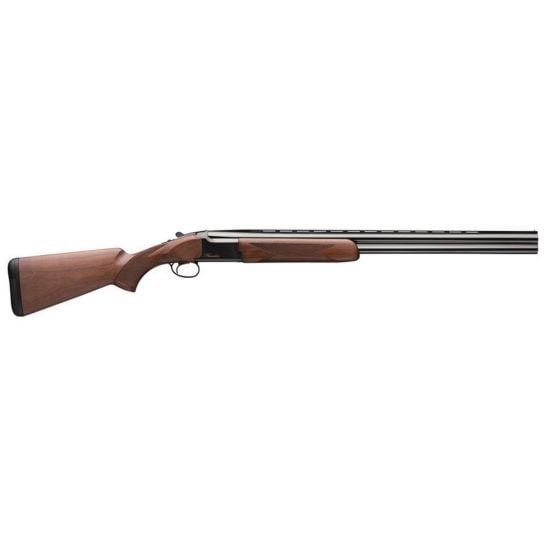
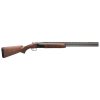
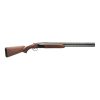
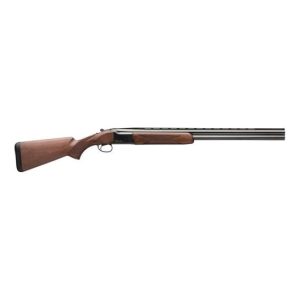
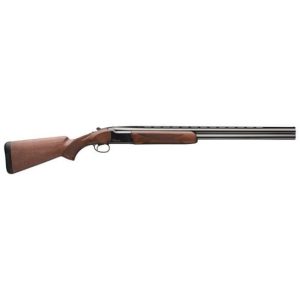
Reviews
There are no reviews yet.